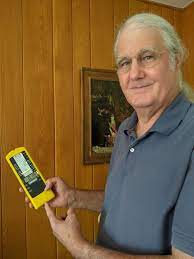In our technologically advanced world, the convenience and benefits of various devices come with potential health consequences. Electromagnetic fields (EMFs) and radio frequencies are two areas of concern that impact our well-being. In this blog post, we summarize insights from multiple sources to provide a comprehensive understanding of these topics. We also explore practical strategies for minimizing exposure to promote a healthier living environment.
The Building Biology Institute, founded after World War II, focuses on addressing air quality, mold, and electromagnetic fields in homes. It highlights the adverse health effects resulting from toxic sources found in American homes. These sources contribute to symptoms such as respiratory issues, fatigue, brain fog, and sleep disturbances, especially in sensitive individuals.
Oram Miller, a building biologist, specializes in EMFs, including magnetic fields, electric fields, radio frequencies, and dirty electricity. He emphasizes understanding how these fields are generated within homes and their potential health implications. By measuring and managing magnetic fields, individuals can minimize their exposure and promote a healthier living environment.
Radio frequencies are emitted by wireless devices such as smartphones, Wi-Fi routers, and Bluetooth-enabled devices. Oram warns about the continuous transmission of radio frequencies from cell phones and highlights the impact of Wi-Fi routers and Bluetooth connections. Alternative solutions are suggested to mitigate exposure to these sources of EMFs.
Dirty electricity, also known as electromagnetic interference, is caused by certain electronic devices like dimmer switches and low-energy light bulbs. Oram emphasizes the importance of managing and minimizing dirty electricity to create healthier living environments. He explains the inefficiency of incandescent light bulbs and highlights the waste of electricity in the form of heat.
Some individuals are more sensitive to EMFs than others, which can pose challenges when living with both sensitive and non-sensitive individuals in the same household. Oram advises sensitive individuals to reduce their exposure by adopting measures like switching to landline telephones and using hardwired Ethernet cables for computers. Finding compromises and solutions that work for everyone in the household is crucial.
Radio frequencies are emitted by various wireless devices and are nearly ubiquitous in today’s society. Magnetic fields, on the other hand, can be more dangerous if present. Understanding the symptoms associated with radio frequency exposure, such as headaches, brain fog, and difficulty sleeping, is important. Proper evaluation of exposure levels through professional consultations can guide individuals in minimizing their risks.
In addition to internal sources, external sources of magnetic fields can impact exposure levels. Power lines, both overhead and underground, can emit magnetic fields that penetrate homes. Factors such as distance, time of day, and air conditioning use affect the strength of these fields.
To reduce EMF exposure, maintaining a safe distance from wireless devices, using speakerphone or wired headsets for phone calls, and turning off wireless features when not in use are recommended. Creating EMF-free zones within the home and using EMF meters to measure exposure levels can further assist in minimizing risks.
Radio frequencies are categorized into different bands based on their wavelength and frequency range. Concerns about potential health effects, including cancer and DNA damage, have been raised. Strategies such as maintaining distance, limiting device usage, and creating EMF-free zones can help minimize exposure.
As our reliance on technology continues to grow, it is essential to understand the potential health risks associated with electromagnetic fields (EMFs) and radio frequencies. The insights shared by experts like Oram Miller and organizations like the Building Biology Institute shed light on the sources and effects of these fields, empowering individuals to make informed decisions for minimizing their exposure.
By recognizing the different types of EMFs, including magnetic fields, electric fields, radio frequencies, and dirty electricity, individuals can take proactive steps to mitigate their impact. Simple measures such as maintaining distance from wireless devices, using wired connections instead of relying on wireless technology, and creating EMF-free zones within homes can significantly reduce exposure.
For sensitive individuals, understanding their heightened sensitivity to EMFs and finding compromises within household environments can be crucial. Implementing alternative solutions like landline telephones, hardwired connections, and minimizing the use of wireless devices can help protect their well-being.
Furthermore, being aware of external sources of magnetic fields, such as power lines, and considering their impact on exposure levels can inform decisions regarding the choice of living spaces and daily routines.
Ultimately, a balanced approach is needed to embrace the benefits of technology while minimizing potential health risks. By staying informed, utilizing measurement tools like EMF meters, and implementing practical strategies to reduce exposure, individuals can create healthier living environments for themselves and their families.
It is important to note that scientific research on the long-term effects of EMFs and radio frequencies is still evolving. Continued studies and advancements in technology will provide further insights into the potential health implications. In the meantime, maintaining awareness and adopting precautionary measures can contribute to a healthier and more mindful use of technology.







